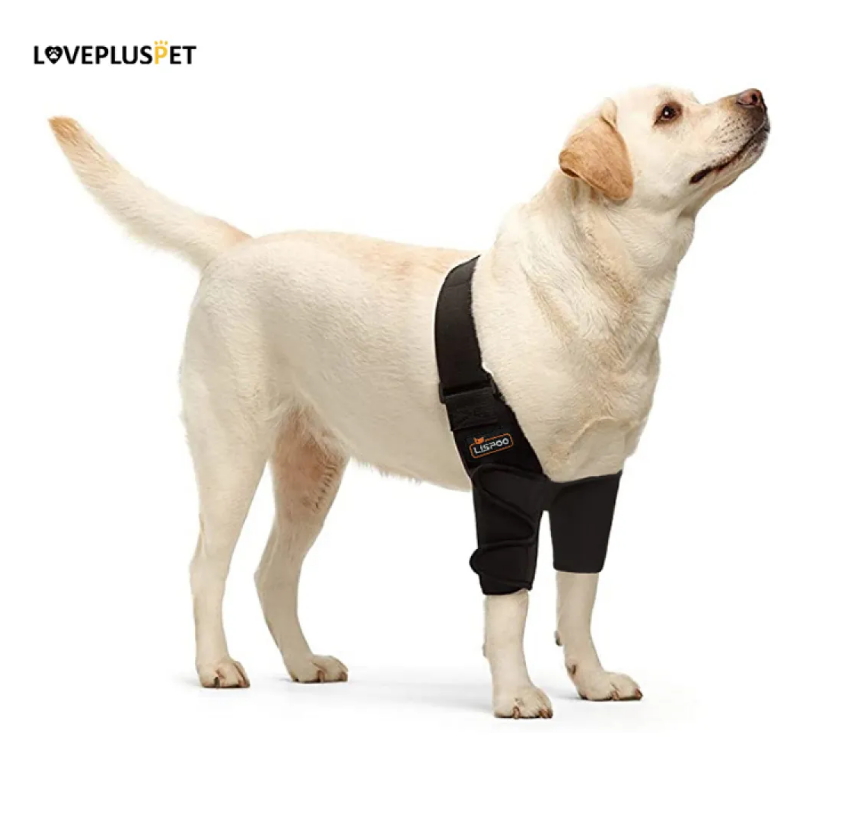Elbow dysplasia is a common orthopedic condition in dogs that causes severe pain and discomfort. This developmental disorder affects the elbow joint and, if left untreated, can lead to lameness and arthritis. It can be distressing for pet owners to see their beloved dog limping or showing signs of pain.
Understanding Elbow Dysplasia
Elbow dysplasia is a term that covers several developmental abnormalities of the elbow joint, including:
- Ultra-anterior ulnar process (UAP): A condition in which a portion of the ulna (one of the bones in the elbow) does not fuse properly.
- Fractured coronoid process (FCP): A condition in which a small piece of bone in the elbow joint breaks off.
- Osteochondritis dissecans (OCD): The cartilage in the elbow joint does not develop properly, causing cracks and separations.
- Incongruence: The bones in the elbow joint do not join properly.
These conditions can lead to joint instability, pain, and, ultimately, arthritis.
Symptoms of elbow dysplasia in dogs may include:
- Limping or limping, especially after exercise
- Stiffness, especially after resting
- Swelling around the elbow joint
- Reluctance to play or exercise
Diagnosing elbow dysplasia
Diagnosing elbow dysplasia usually requires a combination of a physical exam and imaging techniques, such as an X-ray, CT scan, or MRI. Your veterinarian may also recommend an arthroscopy, a minimally invasive procedure that allows a direct view inside the joint.
Treatment Options for Elbow Dysplasia
The goal of treating elbow dysplasia is to relieve pain, improve function, and slow the progression of arthritis. Treatment options can be divided into surgical and nonsurgical approaches.
- Nonsurgical Treatments
Nonsurgical treatments are often the first line of defense, especially for dogs with milder symptoms. These may include:
- Weight management: Maintaining a healthy weight to reduce stress on the joints.
- Exercise modifications: Controlled, low-impact exercises to maintain muscle mass without aggravating the condition.
- Physical therapy: Techniques such as hydrotherapy, laser therapy, and therapeutic exercise to improve mobility and reduce pain.
- Medications: Nonsteroidal anti-inflammatory drugs (NSAIDs) and pain relievers to relieve discomfort.
- Joint supplements: Glucosamine, chondroitin, and omega-3 fatty acids to support joint health.
- Dog Elbow Braces: Braces designed to provide support and stability to the elbow joint, reduce pain, and improve mobility.
- Surgical Treatments
For more severe cases, or when nonsurgical treatments are not effective, surgery may be recommended. Surgical options include:
- Arthroscopy: A minimally invasive procedure used to remove loose bone fragments or cartilage and smooth the surface of the joint.
- Ulna Osteotomy: A procedure that corrects joint misalignment by cutting and realigning the ulna.
- Total Elbow Replacement (TER): In severe cases of arthritis, a total elbow replacement may be necessary to restore function.
What Dog Elbow Braces Do
Dog elbow braces are an important tool in the treatment of elbow dysplasia. These braces offer a variety of benefits, including:
- Stabilization: Elbow dog brace help stabilize the joint, reducing abnormal movements that can cause pain and further injury.
- Support: By supporting the elbow joint, braces can help reduce the stress applied during movement.
- Pain Relief: The extra support provided by the brace helps reduce pain and discomfort, allowing the dog to move more freely.
- Improved Mobility: Dogs wearing dog elbow dysplasia brace experience reduced pain, increased stability, and generally improved mobility, as well as an improved quality of life.
Can Elbow Dysplasia Be Cured?
While elbow dysplasia cannot be "cured" and cannot be completely cured, it can be effectively managed. Early diagnosis and proper treatment, including the use of a dog elbow brace, can significantly improve a dog's quality of life and slow the progression of arthritis. Many dogs with elbow dysplasia can live happy, active lives with the right combination of treatments.
Conclusion
Elbow dysplasia in dogs is a challenging disease, but with proper management, affected dogs can enjoy a good quality of life. Whether it’s through surgical intervention, non-surgical treatment, or the use of elbow dysplasia brace for dogs, there are many ways to alleviate the pain and mobility issues associated with this.



0 Comments